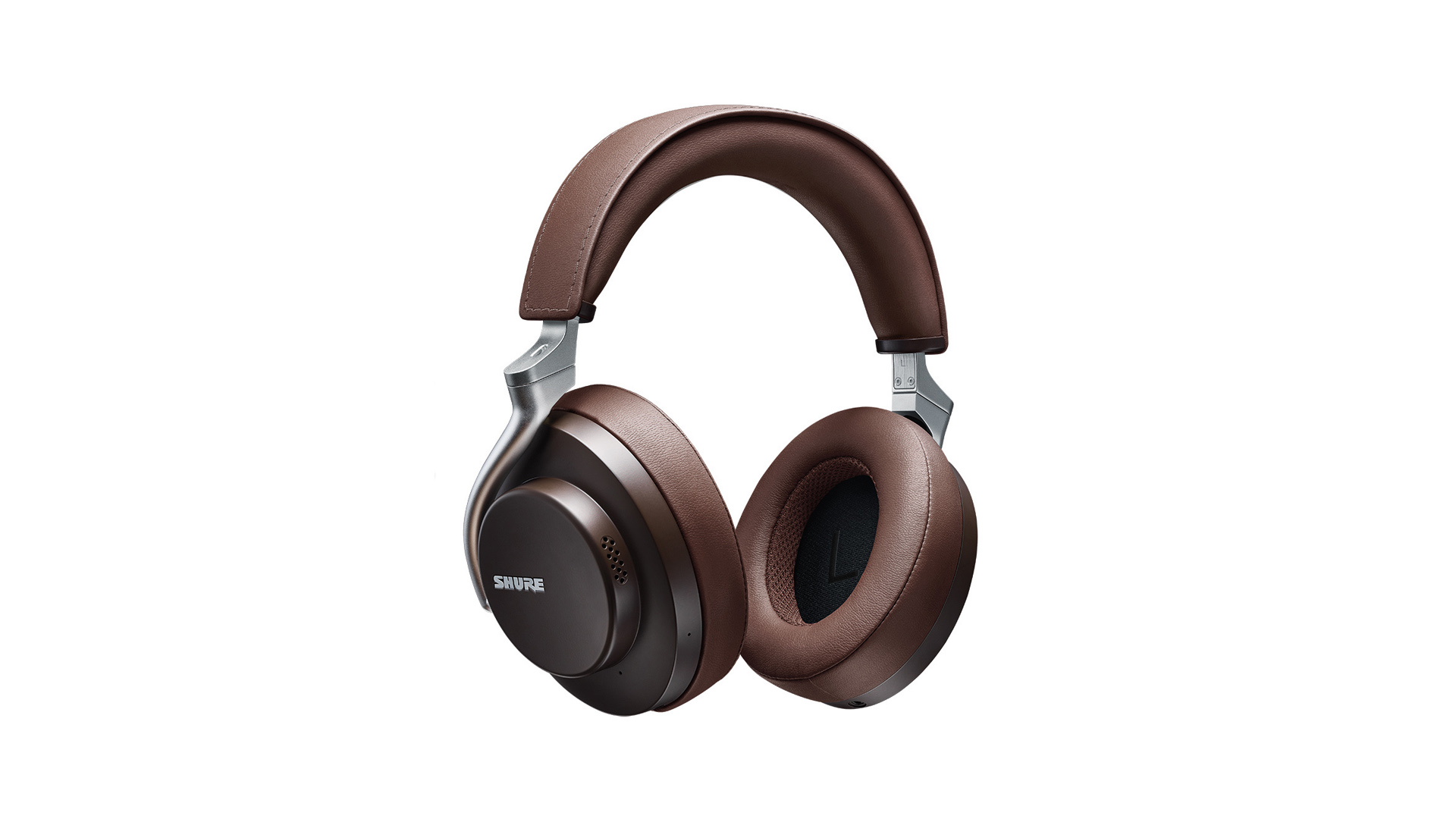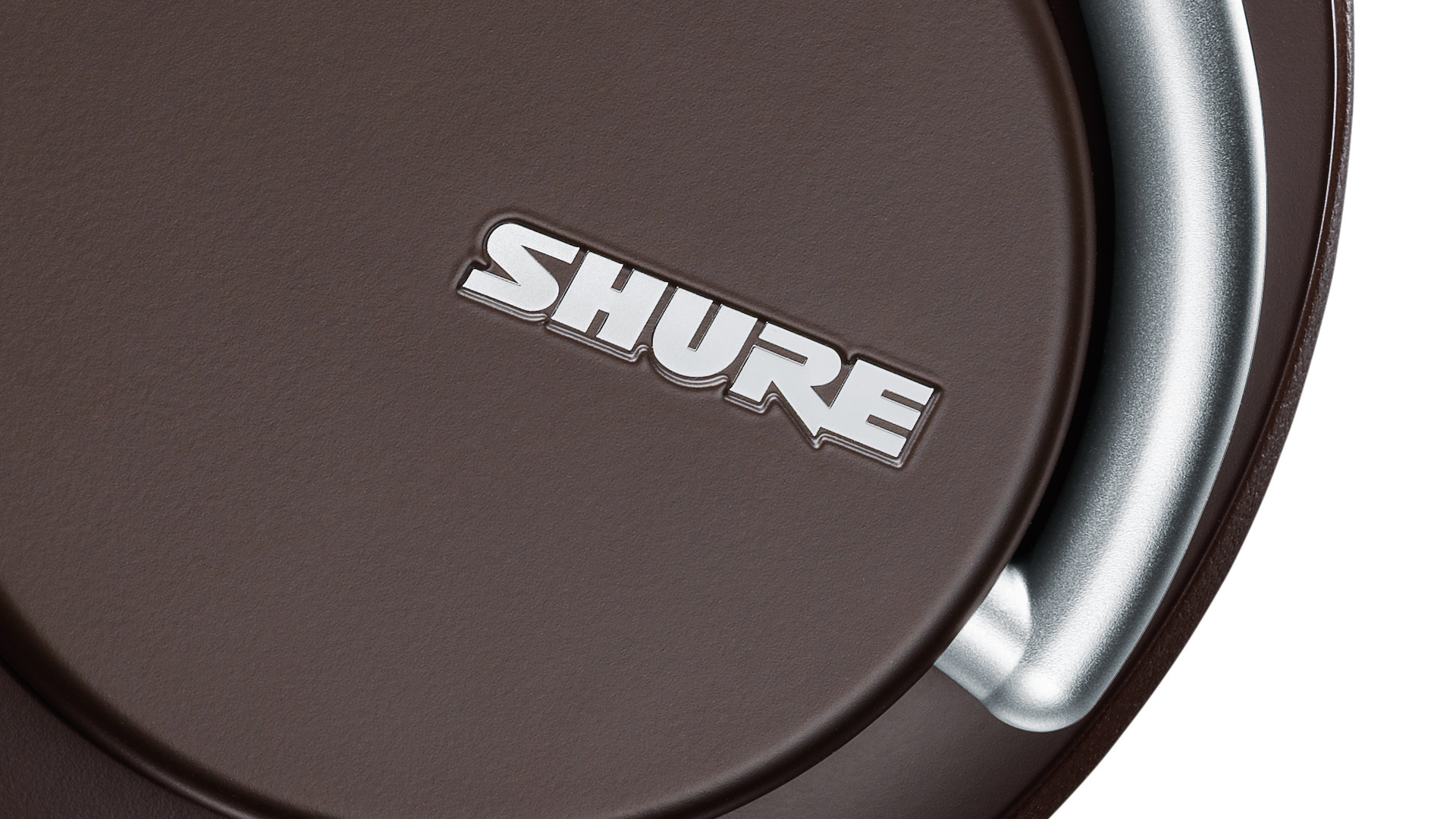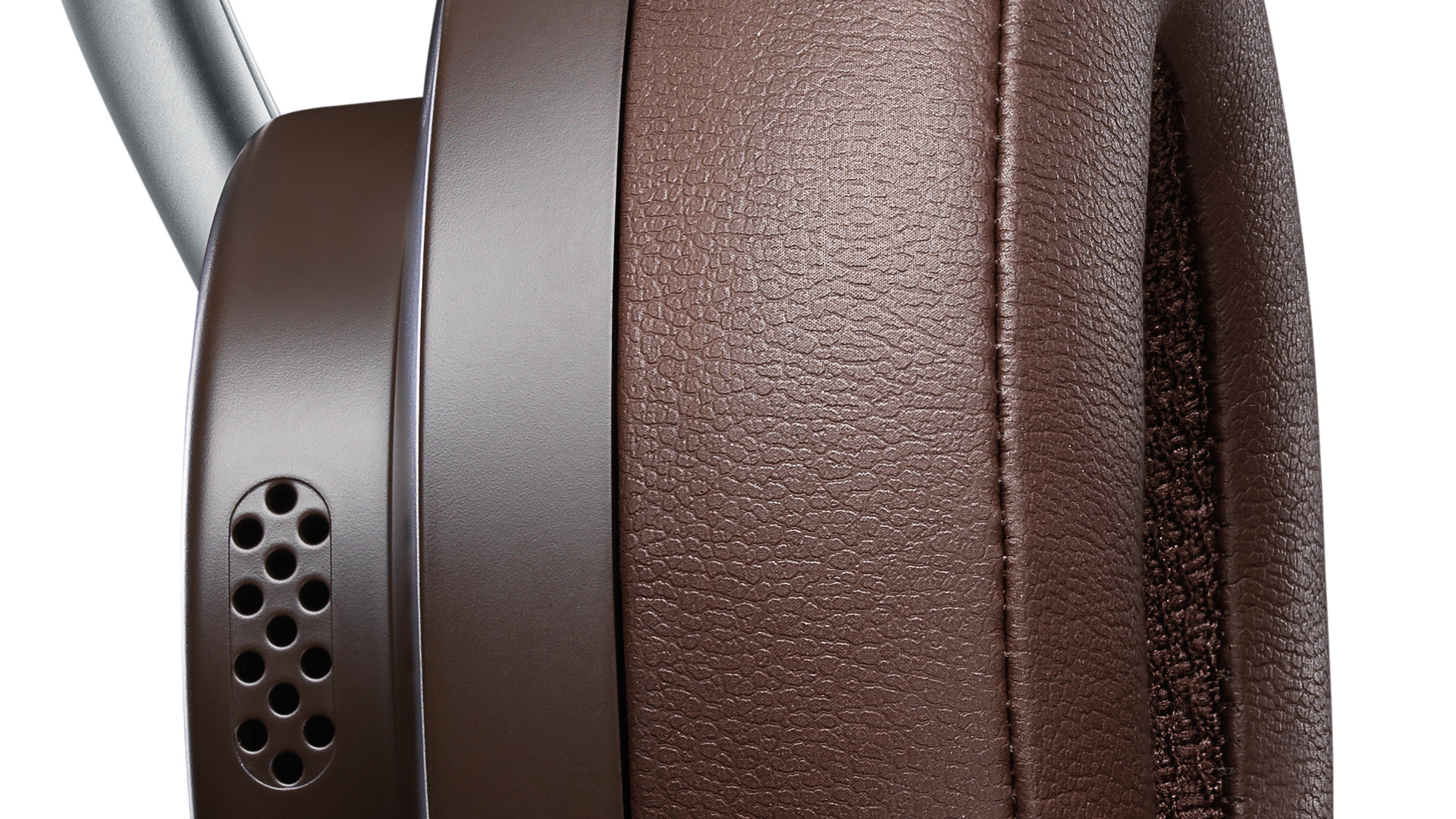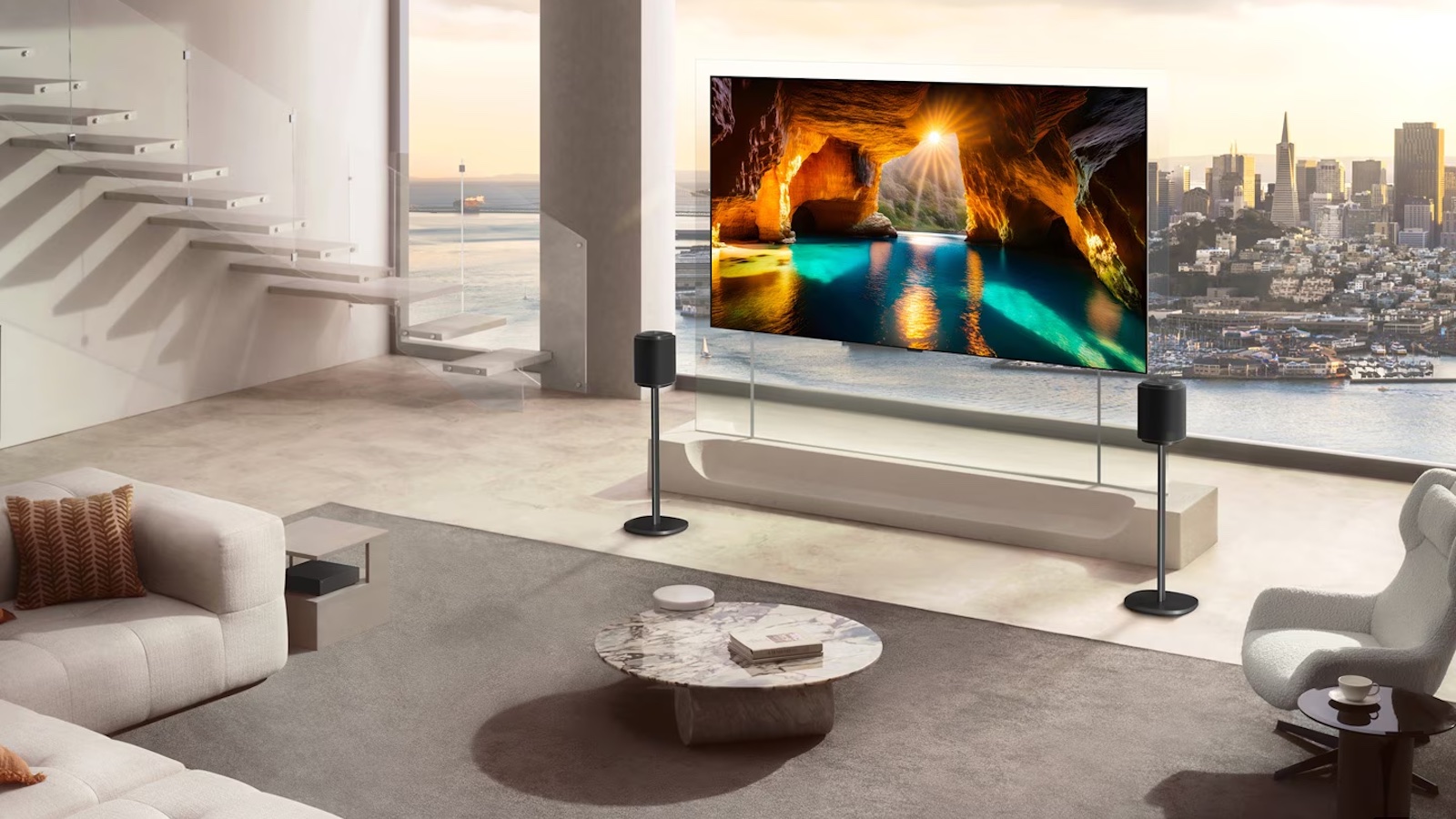What Hi-Fi? Verdict
Shure’s first stab at a pair of Bluetooth noise-cancelling headphones is a good effort but there is some room for improvement
Pros
- +
Outstanding levels of detail
- +
Clear and clean delivery
- +
Solid bass
Cons
- -
Ridiculous carry case
- -
Noise-cancelling is a mixed bag
- -
Not as engaging as class-leaders
Why you can trust What Hi-Fi?
Audio specialist Shure has designed some of the best wired in-ear and over-ear headphones we’ve heard over the years and its products are used by artists ranging from Haim to Hozier. But why stop there?
With the Aonic 50, Shure is embarking on an ambitious journey to break into two new markets at once. These headphones offer both Bluetooth wireless connectivity and have noise-cancelling built-in, the first time that either technology has featured in a pair of Shure over-ear headphones. There’s no doubting the brand’s pedigree when it comes to traditional wired designs, but there’s the added risk here of stepping into the unknown.
And, at £379/$399 a pair (black or brown finishes are available), the Shure Aonic 50 are jumping straight in at the deep end. The headphones sit above current class-leaders from Sony, Sennheiser and Bowers & Wilkins, all of which have set sky-high standards for this type of headphone. So, how do these new Shures shape up?
Comfort

The first thing that strikes you is the Shures’ carry case. It’s large, circular and looks more like a cake tin than a place to store your headphones. Open it up and you’ll find out why. The Shures fold flat as opposed to folding inwards, which means they need extra room to spread out.

Bluetooth version 5.0
Headphone jack 3.5mm
Active Noise Cancelling Yes
Built-in mic Yes
Amazon Alexa No
Google Assistant No
Battery life 20 hours (ANC & Bluetooth)
Weight 334g
Rivals such as the folding Sony WH-1000XM3s and Sennheiser Momentum 3 Wirelesses are more compact and take up less space in a bag. You could just throw the Aonics in flat, but we prefer not to have our headphones rolling around unprotected.
But the Shures feel well put together. The plastic used on the earcups feels robust and doesn’t give the impression it will scratch easily, nor do the shiny Shure logos that highlight the brand name.
The smooth metal arms that attach to each earcup feel especially solid. They twist just above the earcups, which allows them to fold flat, but there’s also just enough freedom so they can twist in the other direction and help angle the earpads on the side of your head and over your ears properly.
The latest hi-fi, home cinema and tech news, reviews, buying advice and deals, direct to your inbox.
At the same time, the Shures look a little unrefined compared to the simpler and more discreet hinge mechanisms used by some rivals.
In hand, it doesn’t feel like there’s loads of cushioning on offer from either the earpads or the headband, but the Aonics are pretty comfortable. The grip pressure is nicely judged – the headphones don’t squeeze the size of your head too tightly, nor do they feel too loose. The headband sits on top without digging into your skull.
Weighing in at 334g, there are lighter noise-cancelling headphones on the market – the Sonys are 255g, while the Sennheisers weigh in at 303g – but the Shures don’t feel too heavy or uncomfortable over long listening sessions, apart from a slight rise in the temperature of your ear.
Build

Charging is done via the USB-C socket at the bottom of the right earcup. Alternatively, the supplied cable is long enough for you to plug the headphones directly into a USB Type-A socket on your laptop. This means they can be used as a wired pair of headphones using the DAC inside the Shures. You can also stick with the traditional headphone cable and 3.5mm jack, also included in the box.
There is a standard assortment of controls dotted around the edge of the right earcup, which relate to playback, volume and power/pairing. There’s also a slider near the top that allows you to switch between noise-cancelling, a neutral mode for when ANC isn’t required, and what Shure calls its ‘Environment Mode’. Think of this as a transparency mode that allows more outside noise through when you need to be more aware of your surroundings.
A small LED signals pairing and battery life while a quick double press of the power button will summon a voice to tell you how much battery life is left.
The Aonic 50s support Bluetooth 5.0, while Shure has also included full aptX and aptX HD support – the latter means these headphones will support wireless hi-res audio up to 32-bit/48kHz from a compatible source. AptX Low Latency should ensure the headphones should avoid any issues with lip-sync, and that proves to be the case during testing.
Shure claims a battery life of around 20 hours with noise-cancelling and Bluetooth both enabled. This isn’t quite as high as some of the class-leaders, but you should have enough in the tank for most trips before they require an injection of power.
There’s no voice-assistant support for Amazon Alexa, Google Assistant or Siri with the Shures, but we’re not overly keen on talking to our headphones on the move anyway. The call quality is pretty clear and direct, although we were blessed with calm conditions during our test period.
There is one slight quirk though – when finishing a call and returning to Amazon Music HD, the music sounds weirdly over-processed, like a switch has been flicked. The only way of getting rid of this is to turn the headphones on and off again.

The Shure’s noise-cancelling has two different levels to choose from: ‘normal’ and ‘max’, while you can also adjust the intensity of the Environment mode. This is all done through Shure’s ShurePlus Play app for Android and iOS devices.
Compared to the companion apps of some rivals, there’s a lot going on here. For example, depending on how music is stored on your smartphone, you can use the app as a media player, which allows you to search for music stored locally in a folder on your device. It can even work together with Apple Music to access playlists and tracks on your phone.
It’s a neat feature in some regards, but it’s quite niche and not something everyone will use, especially when other streaming services such as Spotify and Amazon Music HD don’t allow their downloaded tracks to be seen by the app.
The app has five EQ presets for you to flick between and you can also create your own. The adjustments you can make are pretty in-depth, with frequency, gain and bandwidth all at your fingertips. The only issue is that they only work with music being played through the app.
Sound

We start listing with the slider in the default neutral position, which means no sound mode is engaged. The Shures get off to a strong start, thanks to their clean and transparent presentation. They are nicely balanced with crisp highs and pinpoint, precise lows either side of a solid midrange.
Switch noise-cancelling to the ‘normal’ level and the noise-cancelling kicks in, but the effect is quite subtle. Frequencies are cancelled out and you don't get that vacuum effect and sucking out of sound you can from the noise-cancelling tech of some other brands.
The Shure’s transparency and detail continue to shine through. Play Billie Eilish’s Bad Guy in 24-bit/44.1kHz hi-res through Amazon Music HD and the Aonic 50s deliver a lesson in bass precision. The headphones trim off any excess fat, leaving you with tight bass thwacks and precise, snappy clicks. Thanks to the Shure’s appetite for detail, you can pinpoint every element of the track.
We switch to Eilish’s No Time To Die from the upcoming Bond film of the same title and the Aonic 50s display detail in abundance, but without creating the same sense of atmosphere as the very best. They do many things well, but don’t engage enough with the listener to leave the same lasting impression as the Sony WH-1000XM3s or B&W PX7s, for example.
We shift to the ‘Max’ noise-cancelling setting and things take a turn for the worse. The difference between this and the normal setting is stark. The noise cancelling increases in strength, but the knock-on effect is that you can hear more hiss as the noise-cancelling does its thing.
It also dramatically shifts the sonic balance of the headphones. The whole soundscape sounds thicker and more claustrophobic. There’s an extra layer of weight and solidity, but you sacrifice much of the clarity. It becomes even more apparent that the Shures don’t quite have that same spring in their step or joie de vivre that makes the delivery from some of the class-leaders extra infectious.
Some might find the maximum setting more useful in particularly noisy environments where you might benefit from a slightly fuller, weightier sound, but we prefer the noise-cancelling on its standard setting.
Verdict
Given this is new ground for Shure, the Aonic 50s are a solid first attempt at a pair of wireless noise-canceling headphones.
A flawless debut would have been something quite special and, as it stands, some elements of their design and sonic execution need tweaking before we could consider full marks.
They’re strong performers in a lot of areas though, and if you’re looking for a premium pair of noise-cancelling headphones with some of Shure’s famous audio pedigree, the Aonic 50s are worth a listen.
SCORES
- Sound 4
- Comfort 5
- Build 5
MORE:
Our pick of the best wireless headphones
Read our Sony WH-1000XM3 review
Read our Sennheiser Momentum 3 Wireless review
Read our B&W PX7 review
What Hi-Fi?, founded in 1976, is the world's leading independent guide to buying and owning hi-fi and home entertainment products. Our comprehensive tests help you buy the very best for your money, with our advice sections giving you step-by-step information on how to get even more from your music and movies. Everything is tested by our dedicated team of in-house reviewers in our custom-built test rooms in London, Reading and Bath. Our coveted five-star rating and Awards are recognised all over the world as the ultimate seal of approval, so you can buy with absolute confidence.

